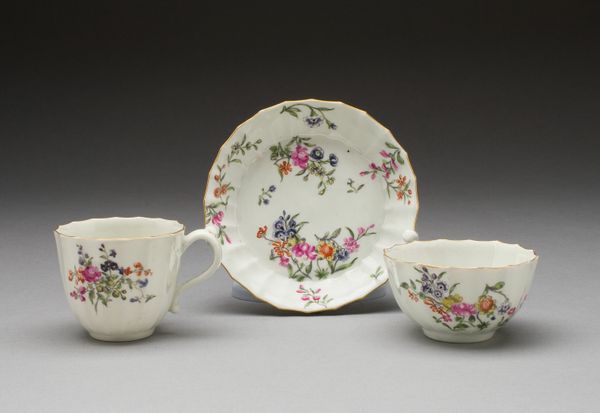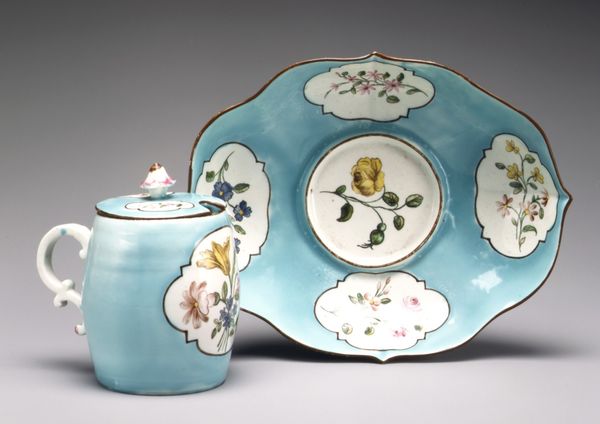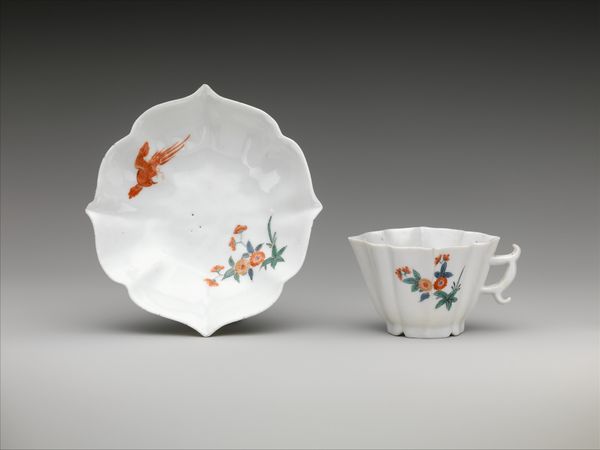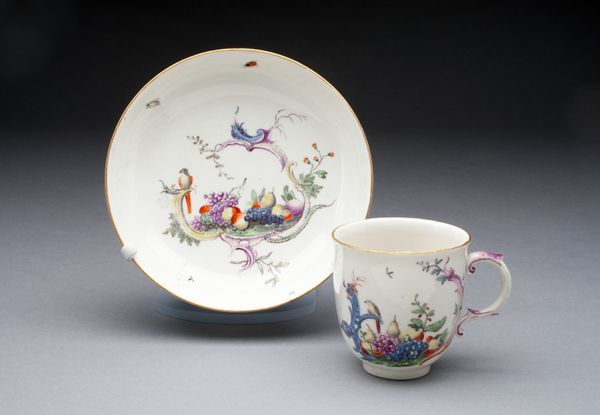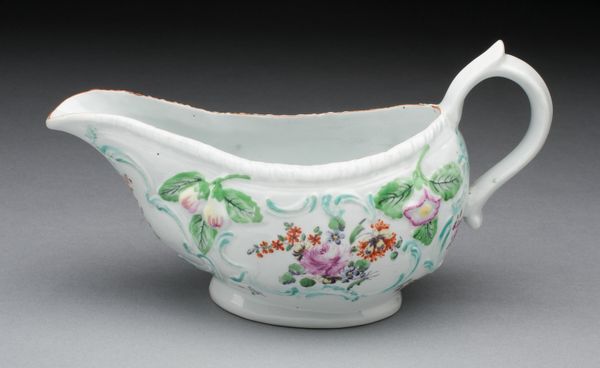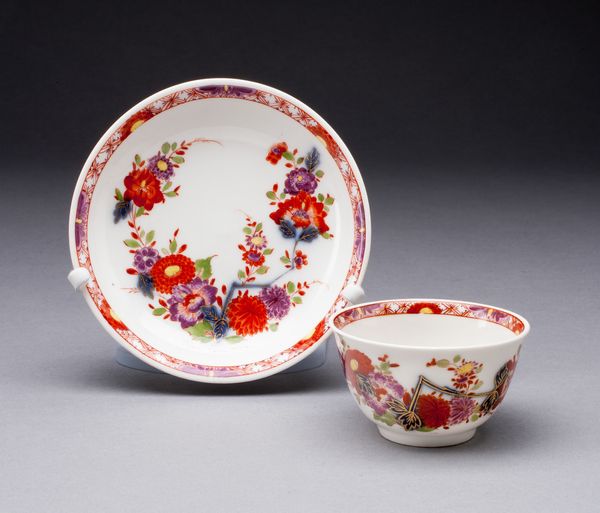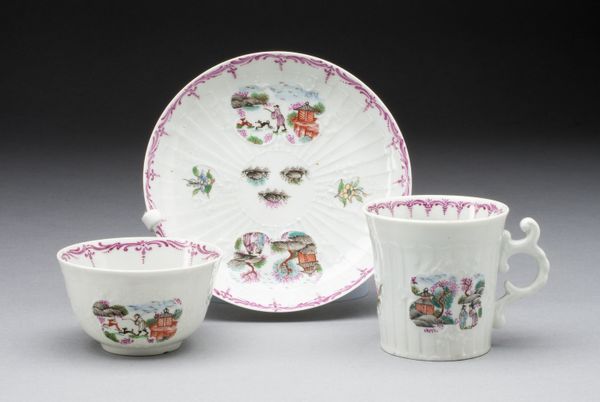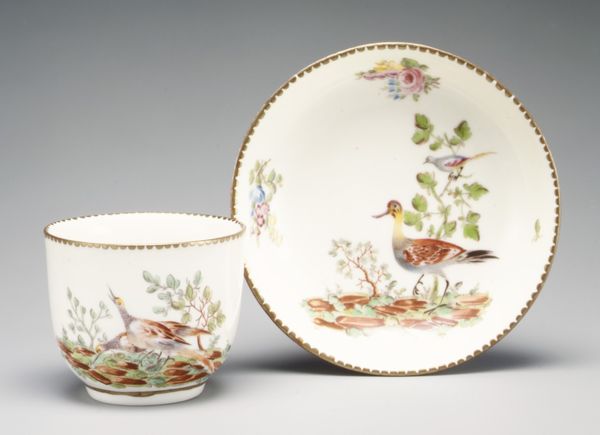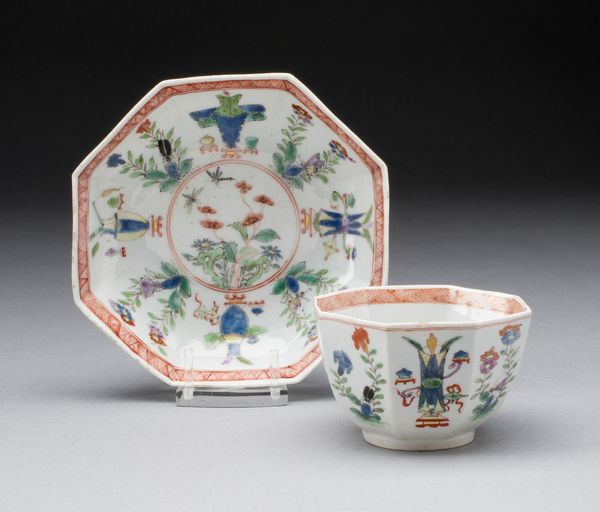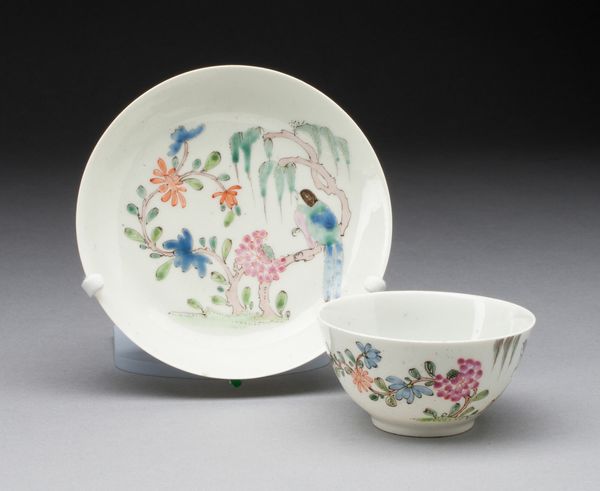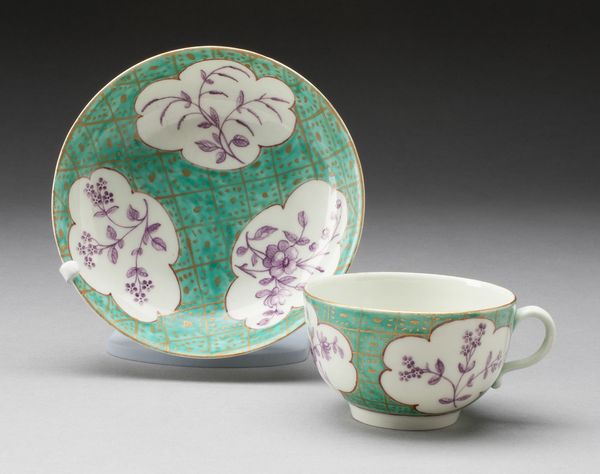
Koffie- en theeservies, beschilderd met waterlandschappen met kastelen/paleizen c. 1778 - 1782
0:00
0:00
loosdrecht
Rijksmuseum
Copyright: Rijks Museum: Open Domain
Curator: Here we have a beautiful ceramic tea and coffee service made in Loosdrecht, around 1778-1782. Each piece is delicately painted with scenes of Dutch landscapes featuring grand houses or perhaps even small castles. Editor: My first thought is, what elegance! The muted tones, the pastoral scenes...it all whispers of a slower, more refined pace of life. Curator: Indeed. These wares speak volumes about the burgeoning Dutch porcelain industry. Loosdrecht, being one of the earliest producers, catered to an elite clientele seeking to emulate continental tastes. Think of it as visual propaganda of taste. Editor: And the landscapes chosen weren't random. Castles, stately homes… they are powerful symbols. Were they aspirational, reflecting the desires of the burgeoning merchant class to connect with symbols of old wealth, authority, and stability? Curator: Precisely. Purchasing pieces like this signaled more than just having good taste. Owning fine Loosdrecht porcelain linked families to powerful lineages; an easy signal for members of the public invited into homes. Displaying this ware communicated a family's ambition, too. Editor: What intrigues me most are these recurring watery landscapes on the individual components. Water as a visual metaphor… renewal, perhaps? Tranquility? Water would always have been a dominant component of life in the Netherlands at the time. Curator: You are on to something. I think they were keen to showcase their environment and its potential. The rococo style allowed painters the chance to demonstrate artistic flair through asymmetrical vignettes. Editor: Rococo…yes. The soft lines, the ornamentation—but with a Dutch restraint, perhaps reflecting their sober societal outlook. It makes for a uniquely Northern European interpretation. The details become these subtle messages, enriching what might at first seem simple images. Curator: Right! Every piece reinforces how intertwined material culture becomes when we understand symbolic power is attached to items in the everyday. Editor: Looking at the arrangement today, as a whole service, I wonder how different social dynamics would unfold around such a ceremonial collection…It’s almost a stage setting. Thank you for shining new light on such fascinating and lovely objects! Curator: And thank you; thinking about imagery ensures our historic insights have wider resonance.
Comments
No comments
Be the first to comment and join the conversation on the ultimate creative platform.
